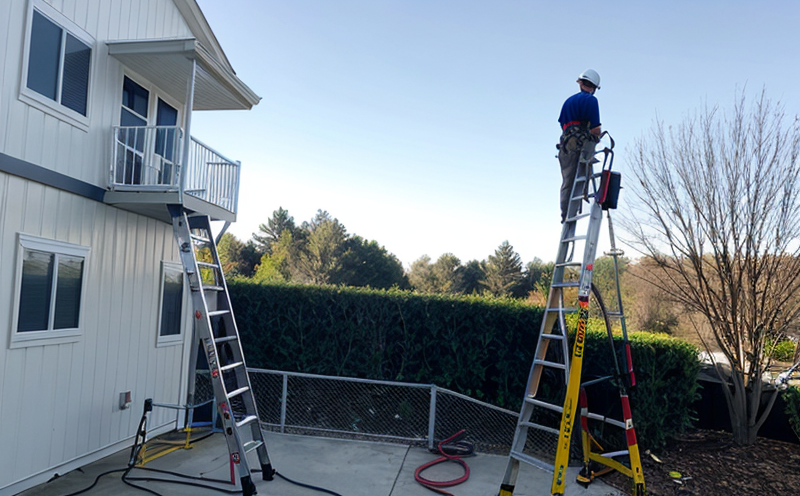Ladder and access system inspection
Inspecting ladder and access systems is a critical aspect of ensuring workplace safety. Ladders are often used in construction sites, maintenance facilities, and other environments where vertical access to hard-to-reach areas is necessary. The integrity of these ladders directly impacts the well-being of workers who use them. This inspection ensures that any potential hazards or defects are identified before they can cause accidents.
According to ISO 43612:2018, ladders should be inspected regularly, especially after use in severe weather conditions or if the ladder has been involved in a fall. The inspection process typically includes visual checks, load-bearing tests, and verifying that all components are intact and not damaged.
The sector context for this service is industries like construction, manufacturing, and facility management, where access ladders play a significant role. Compliance officers need to ensure these ladders meet the necessary safety standards, while quality managers focus on maintaining consistent product quality.
For R&D engineers, understanding the inspection processes helps in designing more durable and safer ladder systems. Procurement teams benefit from this service as it ensures they receive only high-quality ladders that comply with relevant regulations and industry best practices.
Why It Matters
The importance of inspecting ladders cannot be overstated, especially in sectors where safety is paramount. Falls from ladders are a leading cause of workplace injuries, often resulting in severe trauma or fatalities. Regular inspections can prevent these accidents by identifying issues early on.
- Visual Inspection: This involves checking for visible damage such as cracks, rust, or missing parts.
- Load Testing: Ensuring the ladder can support its intended load without failure is crucial. This test checks not only the structural integrity but also the stability of the ladder under stress.
The consequences of neglecting ladder inspections are severe. Inadequate maintenance or use of faulty ladders can lead to workplace injuries, costly downtime, and even legal liabilities for employers. Compliance with standards like ISO 43612 helps mitigate these risks by providing clear guidelines on how to inspect and maintain ladders.
From a broader perspective, ensuring ladder safety contributes positively to the overall health and well-being of workers across various industries. It also supports the goals set forth in international occupational safety and health standards like OSHA (Occupational Safety and Health Administration) in the United States and the EU's Worker Protection Regulations.
Applied Standards
The inspection process for ladders is governed by several international standards, including ISO 43612:2018. This standard provides comprehensive guidelines on how to inspect ladders used in various applications. The key aspects covered include:
- Type of Inspection: Regular inspections versus specific tests after a fall.
- Components to Inspect: Ladder rungs, steps, side rails, and other parts that could affect safety.
- Testing Procedures: Load testing procedures and visual inspection criteria.
The standard also emphasizes the importance of documentation. All inspections should be recorded meticulously, including any issues found and corrective actions taken. This documentation is crucial for compliance audits and internal quality control processes.
In addition to ISO standards, local regulations may impose additional requirements that must be adhered to. For instance, in some regions, there might be specific codes regarding the maximum allowable load capacity of ladders used in certain environments or industries.
Use Cases and Application Examples
- Construction Sites: Ladders are frequently used on scaffolding for painting, maintenance work, or installing equipment. Regular inspections ensure that these ladders can safely support the workers performing such tasks.
- Manufacturing Facilities: Workers may need to access high shelves or machinery using ladders. Routine inspections help maintain a safe working environment in these areas.
- Facility Management: In large buildings, maintenance staff often use ladders to inspect and repair elevators, HVAC systems, and other infrastructure components. Proper inspection of these ladders is essential for ensuring worker safety.
Another example involves ASTM F1570-20, which specifies the performance requirements and test methods for non-self-supporting ladders. This standard is particularly relevant in sectors where ladders are not used independently but as part of a larger system, such as ladder racks or portable scaffolding.
For instance, in a chemical plant, workers may need to access tanks using a specially designed ladder that fits into a tank's opening. Ensuring this ladder meets the requirements set by ASTM F1570 helps prevent accidents and ensures compliance with safety regulations.





